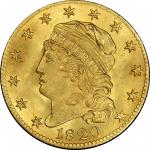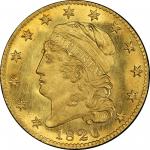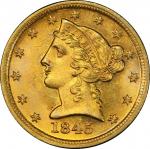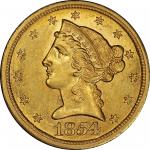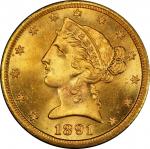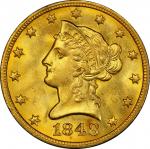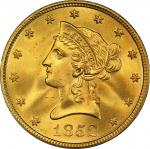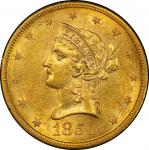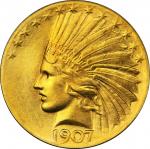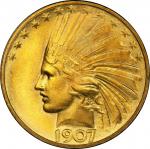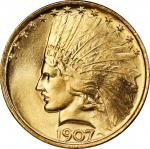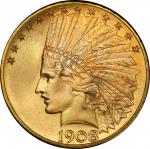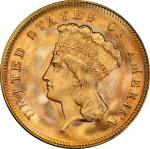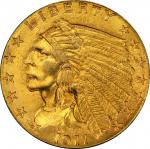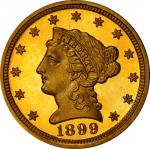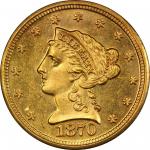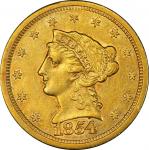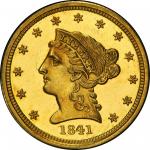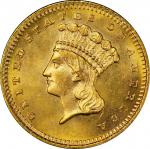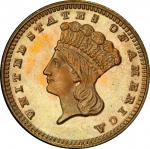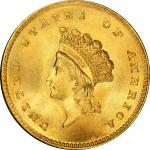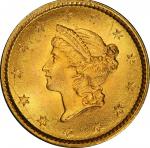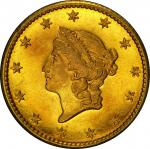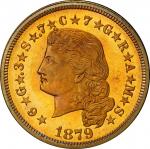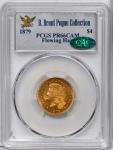1879 Four-Dollar Gold Stella. Flowing Hair. Judd-1635, Pollock-1833. Rarity-3. Gold. Reeded Edge. Proof-66 Cameo (PCGS). CAC. Blended golden-olive and orange-apricot patina provides outstanding visual appeal; the centers have blushes of equally attractive pinkish-rose iridescence. Reflective fields support frosty design elements, with the interplay between these two features resulting in the coveted CAM designation from PCGS. Here is a sharply struck, beautifully preserved example of this classic nineteenth century gold type.The dream of a unified international currency has been a goal of many of the worlds great economies for centuries. In Europe, the various and disparate coinage denomination and monetary standards made cross-border commerce quite complicated at times. By the mid nineteenth century, several European nations took the first steps to establish a freely exchangeable monetary standard. These efforts finally took root with the signing of a treaty on December 23, 1865, establishing the Latin Monetary Union. The Latin Monetary Union set a bimetallic gold and silver standard at a fixed ratio of 15-1/2 to 1 and set at its center the Napoleonic franc of 1803. Through the Union, one franc would be the same as one lira, peseta, leva, or drachma and easily exchangeable within all of the member nations. Originally the union comprised of Belgium, France, Italy, and Switzerland, but was soon joined by many other continental European nations. It lasted until its dissolution in 1927.The United States had looked to Europe for much of its trade ever since the early days of the Republic. However, early coinage policy was primarily focused on domestic ease of use, with only basic consideration given to international trade. As overseas commerce increased in the first half of the nineteenth century, especially among European nations, interest in internationalizing Americas precious metal coinage grew. The establishment of the Latin Monetary Union further accentuated the need. By the later 1870s international trade had increased at a steady rate and more Americans were traveling abroad for both business and pleasure. They experienced the easy convertibility of the various currencies within the Latin Monetary Union in sharp contrast to the difficulty of trying to convert American coins into European currencies. The stage was set for a wide variety of proposals to bring the nations monetary standards in line with those of the Latin Monetary Union in particular. While some of these proposals, such as the 1874 patterns by Dana Bickford, were innovative and garnered at least some modest support, they did not get any traction and never went beyond the concept phase. Silver interests were dominating the political scene in the 1870s, and three Congressmen in particular, Richard "Silver Dick" Bland of Missouri, William Kelley of Pennsylvania, and John Kasson of Iowa, were keen on influencing the debate. It was through Kasson that the concept of the $4 Stella originated.In 1877, Kasson was appointed by Rutherford Hayes as Envoy Extraordinary and Minister Plenipotentiary to the Austro-Hungarian Empire, where he was exposed to the difficulties in converting American dollars into Austrian florins and back again. When he returned, Kasson submitted a proposal for a four-dollar coin that would be closer in weight to the Austro-Hungarian 8 florin piece, equivalent to the French 20 franc coin. In addition, Kasson recommended that the four-dollar gold piece be minted in an unusual metric gold alloy of 85.71% gold, 4.29% silver and 10.00% copper, inspired by a similar silver alloy called <em>goloid </em>patented by Wheeler W. Hubbell of Pennsylvania. Kasson took his plan to the current Coinage Committee chairman (and former Confederate vice president), Alexander Stephens who in turn, wrote to Secretary of the Treasury John Sherman requesting that the Mint prepare patterns of the denomination for Congressional evaluation.Two obverse designs were prepared, each featuring a different representation of Liberty: the Flowing Hair design by Charles E. Barber, as here, and the Coiled Hair design by George T. Morgan. Surrounding Libertys bust is the legend *6*G*.3*S*.7*C*7*G*R*A*M*S* to indicate the intended composition of the new "metric" alloy. Both varieties are paired with the same reverse design featuring the prominent large five-pointed star from which the coin earned its name and the denomination expressed three ways: ONE STELLA, 400 CENTS, and FOUR DOL. Both designs were produced bearing the dates 1879 and 1880 for a total of four basic varieties of Stella. While the primary legislative consideration was focused on the $4 gold piece, $20 "Quintuple Stella" patterns were also prepared along with metric silver and goloid dollars. Additional patterns of the $4 coin were also prepared in copper, aluminum, and white metal in unknown but certainly small quantities.Of the two obverse designs, Barbers Flowing Hair was selected to be presented to Congress for review and approval. Estimates vary as to how many were coined for the three-piece Proof pattern sets, ranging from 10 up to 25 pieces. The sets were shown to Congressional leaders who, alongside other government officials, took an immediate liking to the unusual coins and requested that the Mint strike more. In response the Mint then coined a second much larger batch of Stellas in 1880, all bearing the 1879 date. The traditional mintage figure quoted is 425 pieces though it may be as high as 800 as suggested by Q. David Bowers in the most recent editions of the Judd reference on pattern coins. Walter Breen in his 1988 <em>Encyclopedia</em> states that the "Original" strikes (as he called them) may be differentiated from the 1880 "Restrike" pieces by the deeply mirrored fields and the lack of striations most obvious on the central design motifs of many examples. This remains the subject of much discussion as to whether or not such a differentiation even exists, since examples with Cameo characteristics clearly show the referenced striations created during planchet preparation. Breen himself noted that the so-called original pieces had not been "offered in many years" at the time he was writing.The obverse legend states that the alloy is the unusual 85.71% fine gold alloy as originally proposed. Given that these pieces were produced entirely as patterns and not for use in circulation, and the proposed metric alloy was never approved, conventional wisdom is that the statutory 90% gold alloy was used instead. So far as is known no Stella has been subjected to the necessary scientific analysis to prove this definitively. That the diameter of the Stella is the same as the contemporary half eagle lends some credence to this assertion since no specialized equipment would have been required to prepare planchets for these experimental coins.For all the attention surrounding the coin in the halls of Congress, the Stella was not able to attract enough support for full-scale production. While its intention was to be used in international trade, there was no equivalent to the Stella abroad. In addition, there was no obvious use for it domestically. The proposal died on the vine and the Stella entered into numismatic lore. Stellas were only struck as Proofs, but because many of the remaining coins ended up as pocket pieces or set into jewelry, they often appear as if they have seen very heavy circulation. Many are damaged with filed rims, scratches, and wear commensurate with long service in jewelry. This use has sparked one of the most popular, enduring, and so far unsubstantiated myths about the Stella: that they were given as presents by randy congressmen to their preferred madams. The storys origin is uncertain but it gained wide currency through Breens <em>Encyclopedia </em>where he states without specific citations or primary sources that:"Though extremely popular today, and much exaggerated in rarity, Stellas in their own day provided a juicy scandal resulting in amusing newspaper copy for several years - and many laughs at the expense of the congressmen who had ordered the restrikes. The story broke that while no coin collector could obtain a Stella from the Mint Bureau at any price, looped specimens commonly adorned the bosoms of Washingtons most famous madams, who owned the bordellos favored by those same congressmen. Today there are several dozen 1879 Flowing Hair Stellas with telltale traces of removal of those same loops, whose owners probably sometimes wish the coins could talk."Attempts to locate accounts proving the validity of this story have so far proven fruitless; the few contemporary news references of the Stella are basically banal announcements of new bills authorizing the coins in Congress and little else.Over the years the Stella has achieved near-legendary status among numismatists. Though strictly classed as a pattern, the Stellas have long been included as key to a type collection of United States gold, thanks in no small part to inclusion in the <em>Guide Book</em> for generations. The inclusion of any Stella in any condition has long been considered a great numismatic achievement. The beautiful Gem Cameo from the Pogue Collection will be a highlight in the cabinet of its next owner. From the D. Brent Pogue Collection. Earlier, from our (American Numismatic Rarities) Allison Park Collection sale, August 2004, lot 983.

